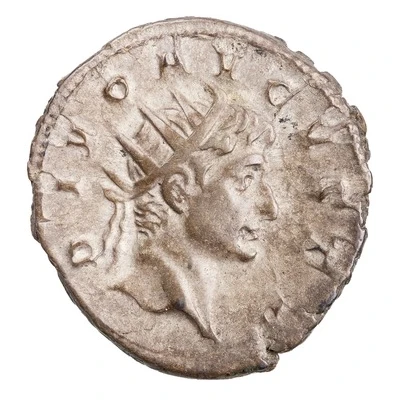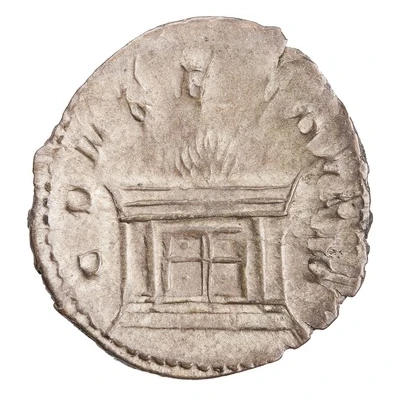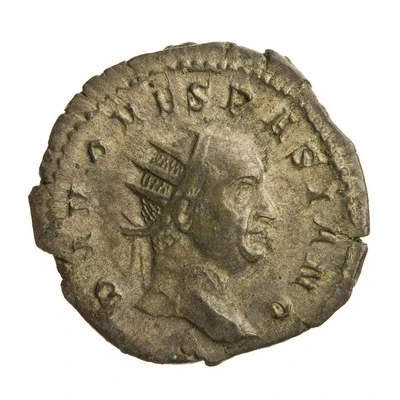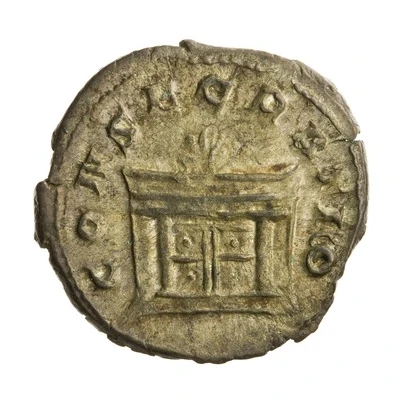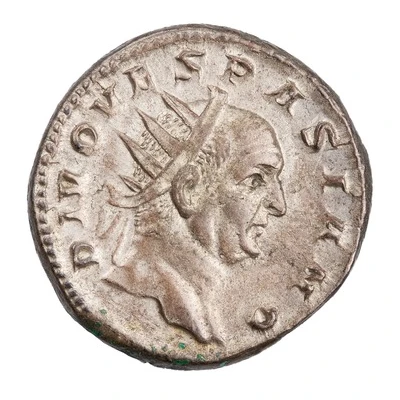
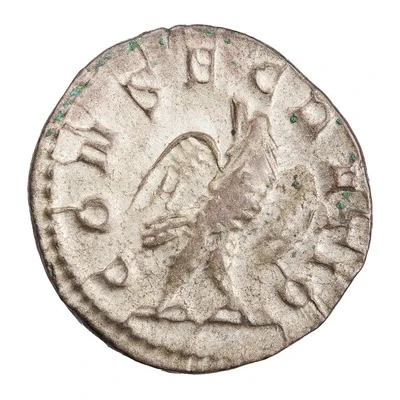

© American Numismatic Society (ANS)
Antoninianus - Vespasian Posthumous; CONSECRATIO
| Silver | 3.7 g | 22 mm |
| Issuer | Rome › Roman Empire (27 BC - 395 AD) |
|---|---|
| Emperor | Decius (Gaius Messius Quintus Traianus Decius) (249-251) |
| Type | Standard circulation coin |
| Years | 250-251 |
| Value | Antoninianus (1) |
| Currency | Antoninianus, Reform of Caracalla (AD 215 – 301) |
| Composition | Silver |
| Weight | 3.7 g |
| Diameter | 22 mm |
| Shape | Round (irregular) |
| Technique | Hammered |
| Orientation | Variable alignment ↺ |
| Demonetized | Yes |
| Updated | 2024-10-05 |
| Numista | N#283034 |
|---|---|
| Rarity index | 100% |
Reverse
Eagle, with open wings, standing front on bar, head right.
Script: Latin
Lettering: CONSECRATIO
Translation: Consecration.
Comment
Mass varies: 2.99–5.055 g;Diameter varies: 21–23 mm;
Example of this type:
American Numismatic Society (ANS)
Source:
Online Coins of the Roman Empire (OCRE)
Interesting fact
The Antoninianus coin was issued during the reign of Vespasian, who was the Roman Emperor from 69 to 79 AD. The coin's design features a portrait of Vespasian on one side and a depiction of the goddess Concordia on the other. The coin was minted in Rome and was used as a standard circulation coin throughout the Roman Empire. It's interesting to note that the Antoninianus coin was introduced by Vespasian as a replacement for the denarius, which had been the standard Roman coin for centuries. The Antoninianus was made of silver and had a higher value than the denarius, which helped to stabilize the Roman economy during a time of inflation. Overall, the Antoninianus coin is an important piece of Roman history and offers a glimpse into the economic and political climate of the time.
